Plastic Plankton
Post-consumer Plastics and Light.
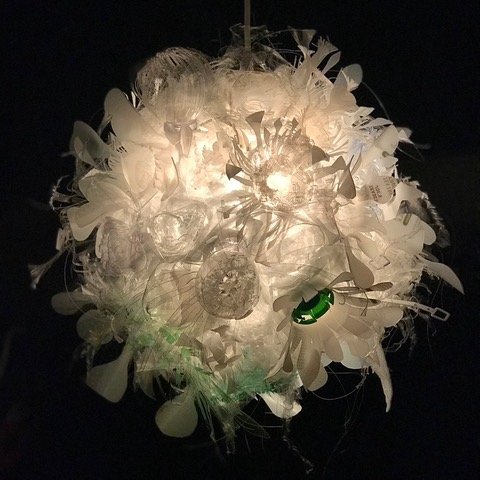
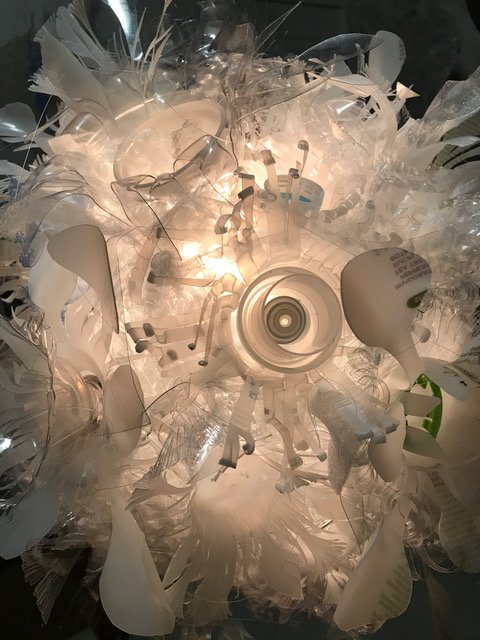
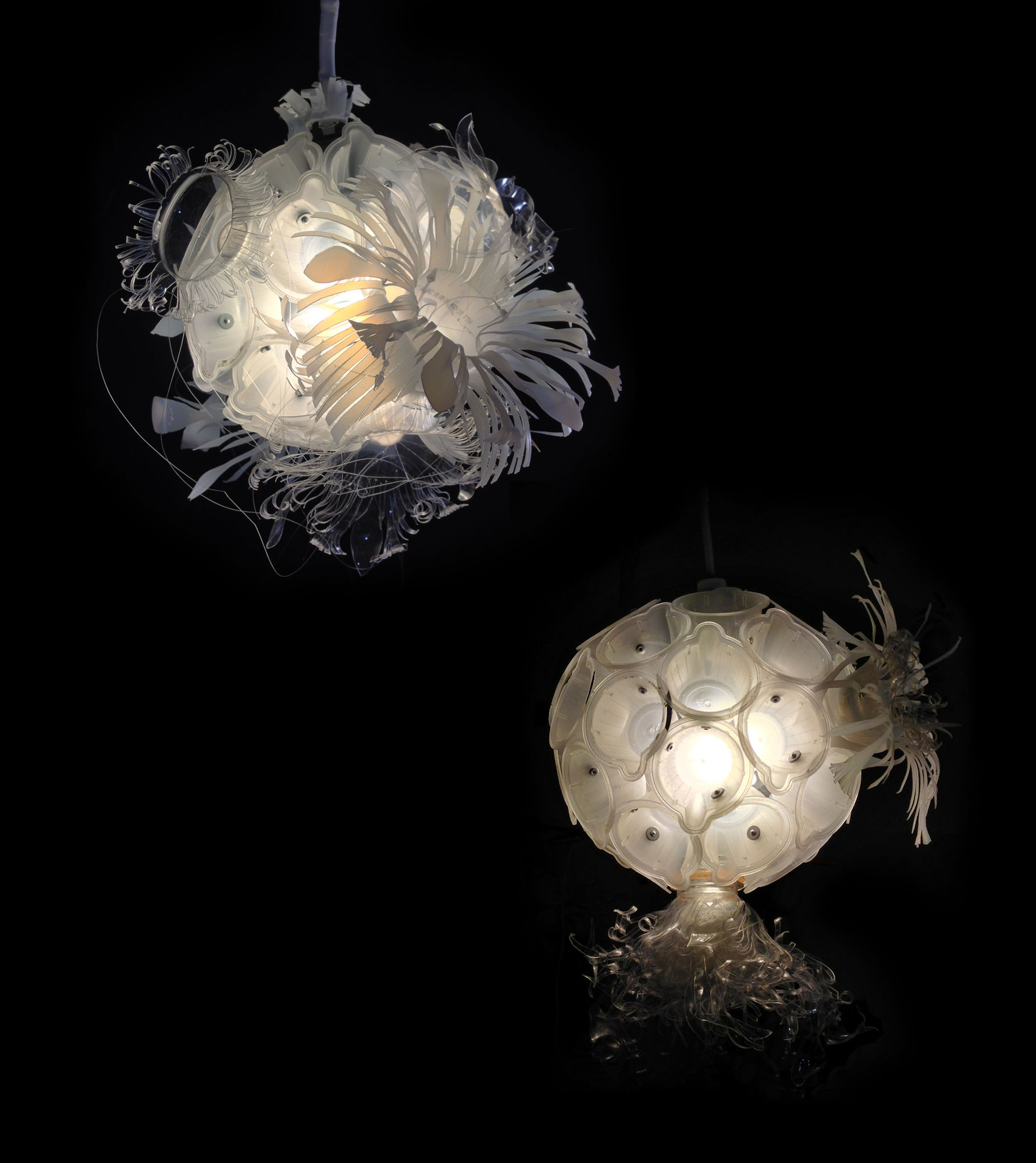
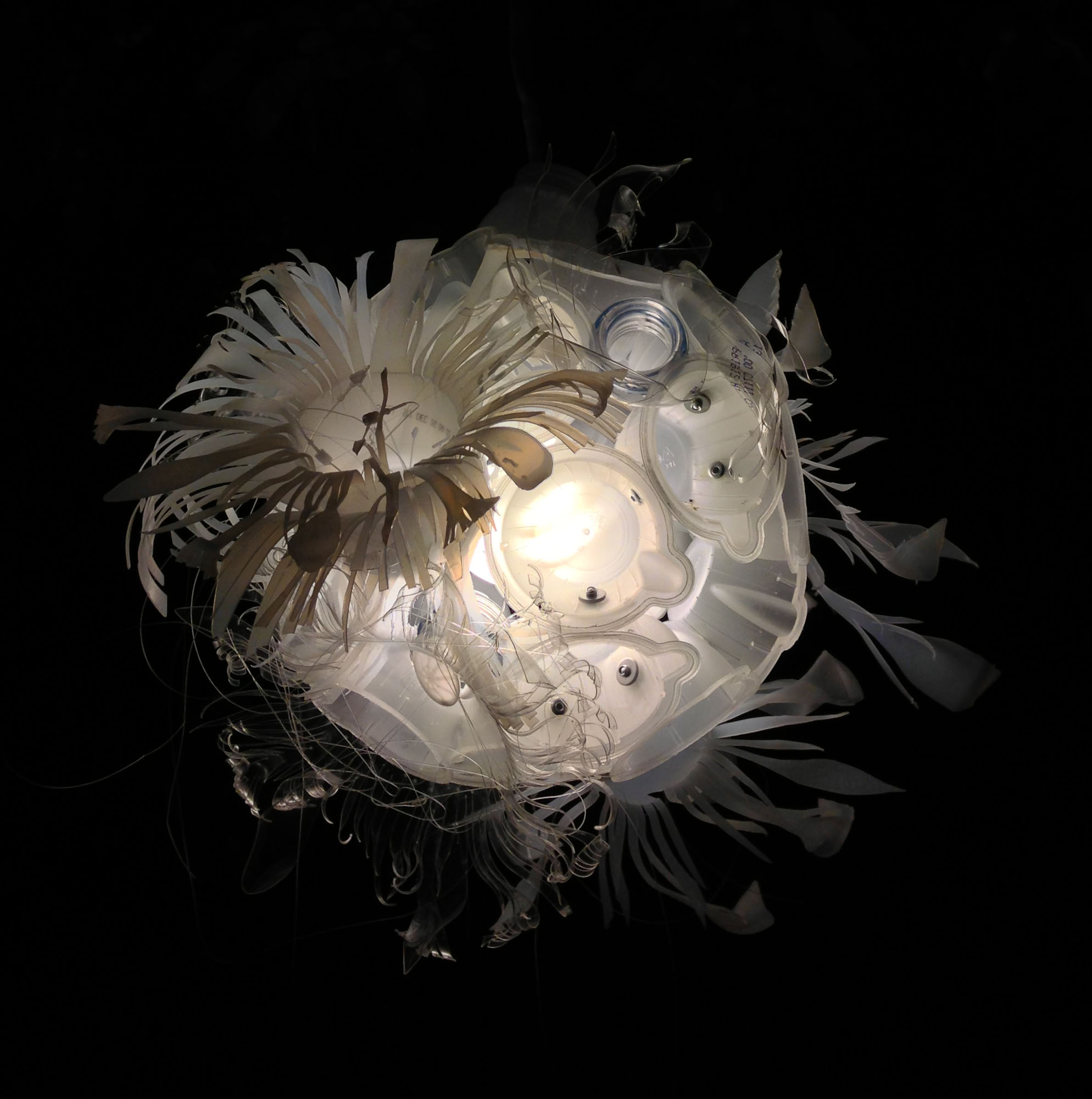

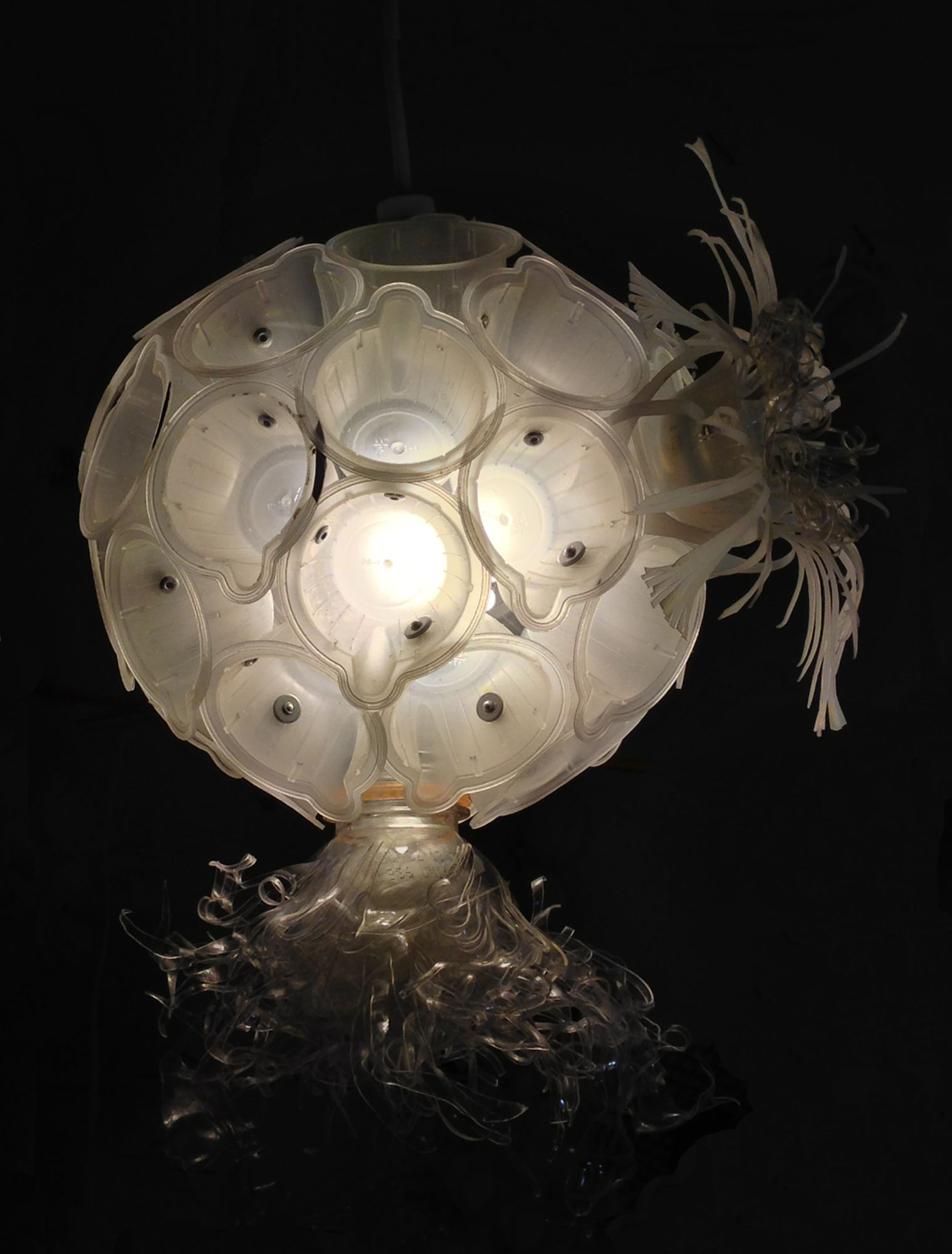
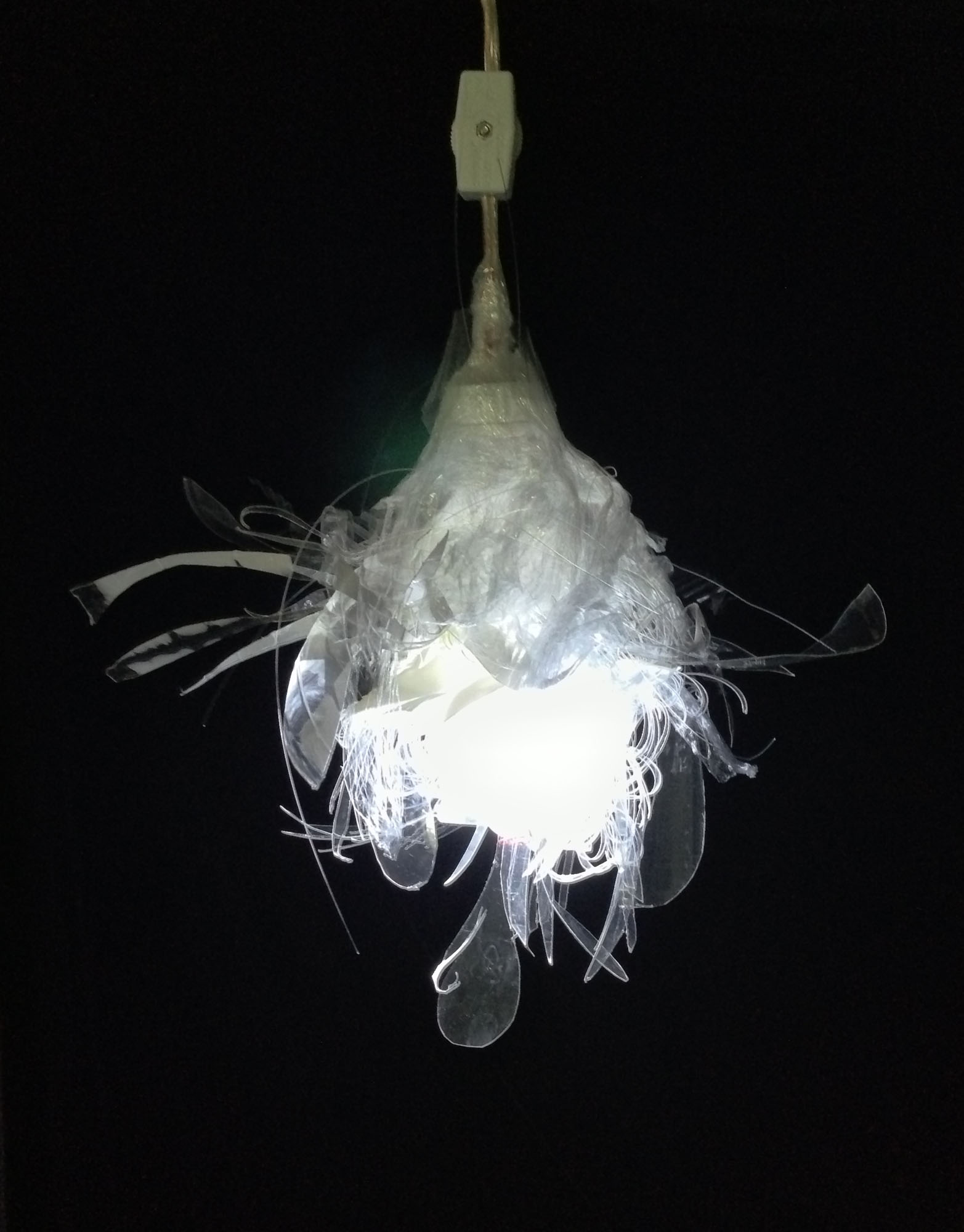
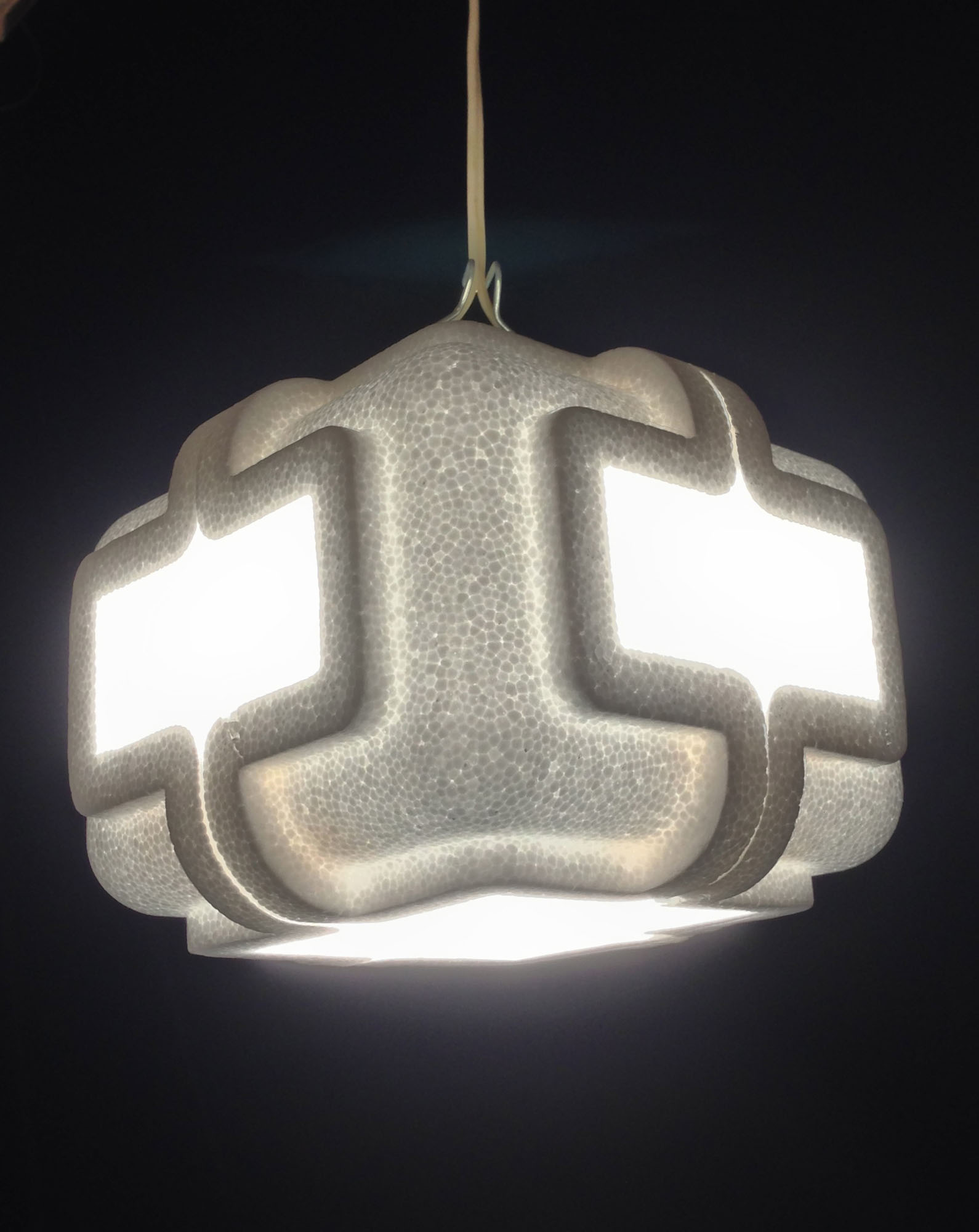
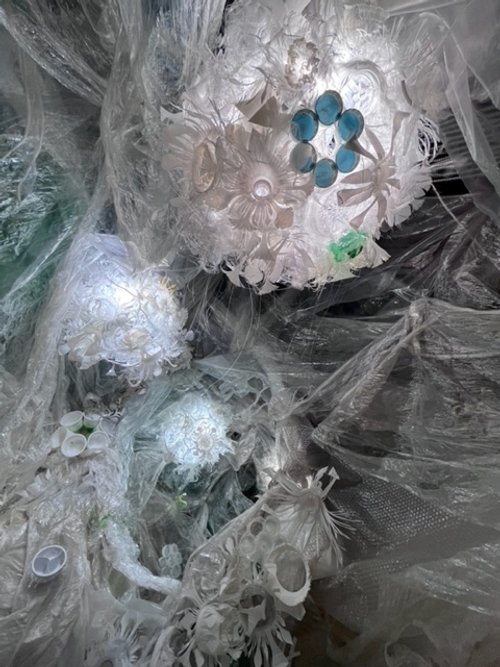
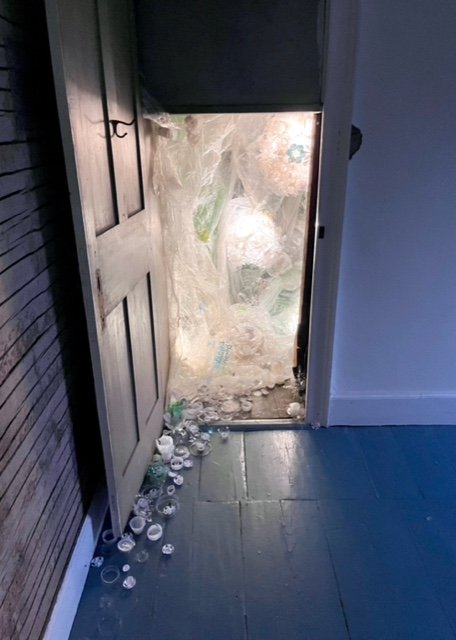
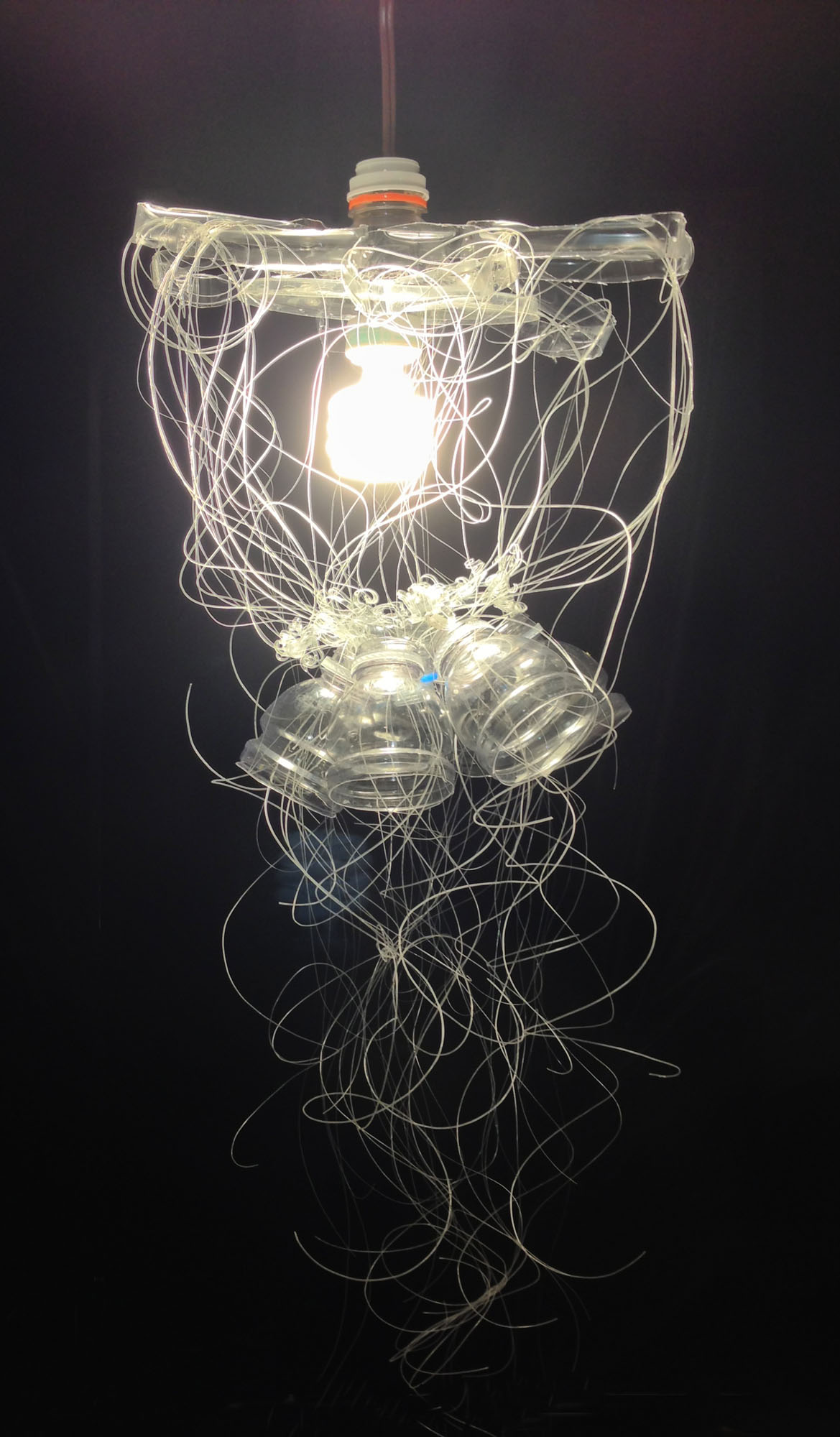
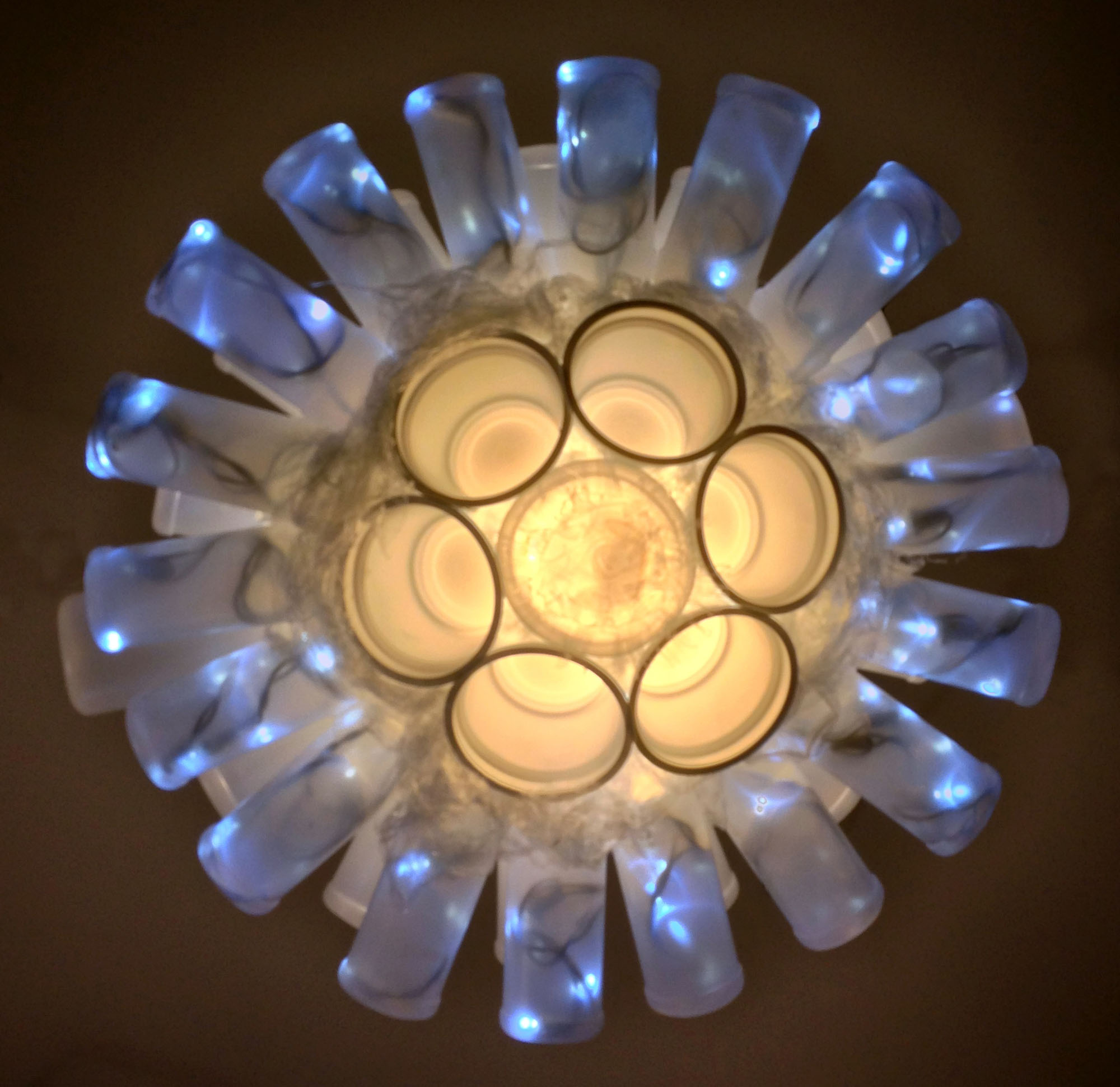



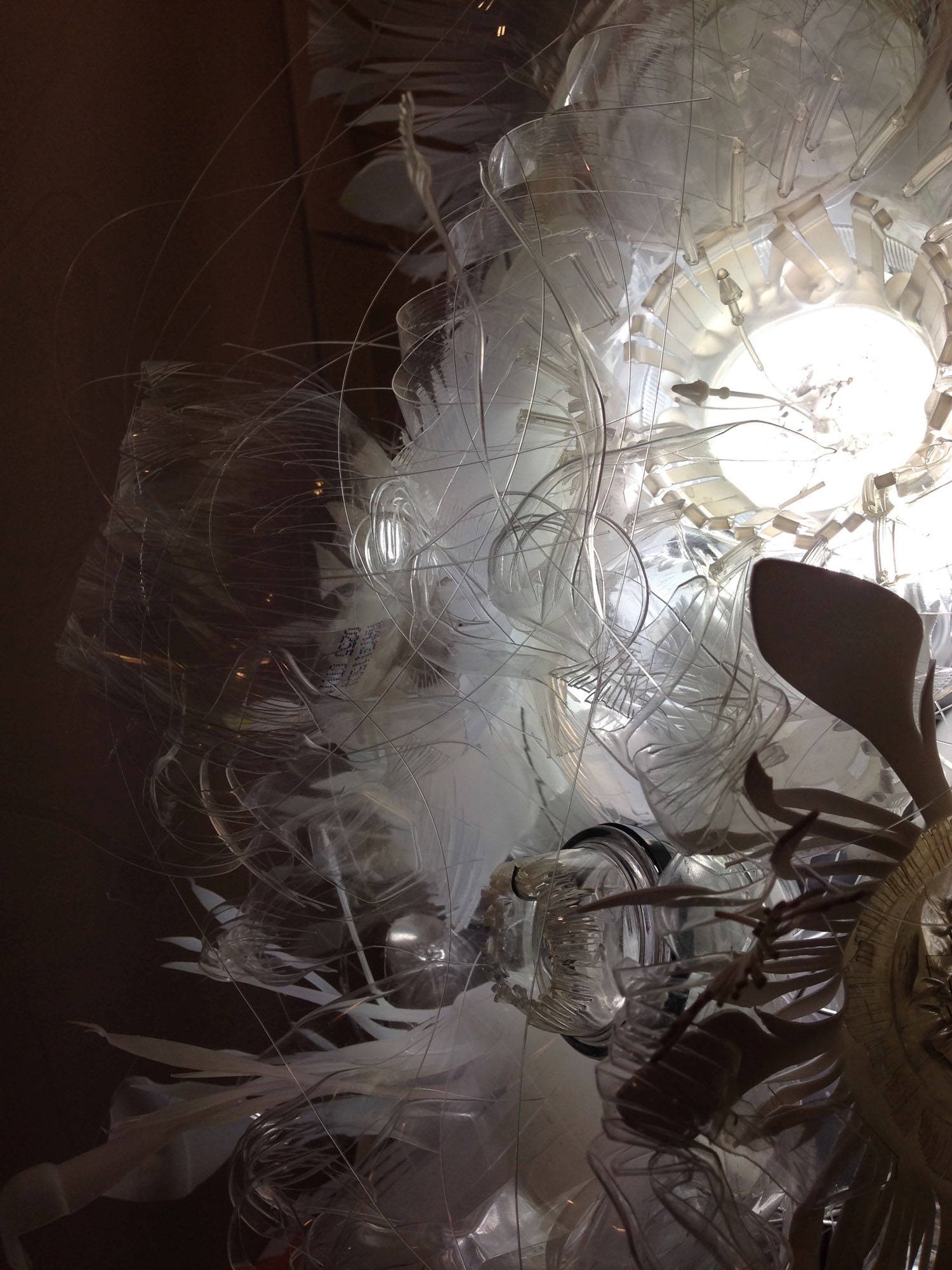

“Plastic Plankton” because plastics often find their way downstream into the waters. When they break into smaller and smaller bits, and are mistaken as plankton, they move up the foodchain. Plastics contain harmful toxins, leeching into the food we eat, the water we drink, and the environments we share with all living beings. Single use plastics have an extremely short useful life, yet ripple through the world in harmful ways for extremely long amounts of time. Plastic production has gone from 2.3 million tons in 1950 to 448 million tons in 2015. Plastic producers plan to double again by 2050. We need to change this pollution that is flooding the planet and especially harming the people and beings who live closest to places where plastics are produced and end up. More and more plastics are ending up in the oceans and waterways. Time to change this!! Time to stop single use plastics!!
Source: https://www.vpirg.org/stop-single-use-plastics/
Artist’s Statement for Plastic Polyps installation at the Kent, September 2024
All materials are living. What if plastics were treated as precious?
How do we treat materials? How do we treat each other? I think this is linked in the harmful toxic extraction, “refining", and "disposal" cycles that continue to degrade societies, environments and ecologies on large scales across the world.
What kind of illuminated worlds can we envision and form? What will it look like when we invite, step up, and support healthy systems? What will eliminating toxic ‘goods’ look like? What are systems of circulating good goods?
‘Polyps’ are the basic building blocks of coral – normal growths clustering and building into thriving reefs. ‘Polyps’ can also be abnormal growths within our bodies. Clumps of cells that grow in the intimate places of our noses, colons, wombs. Plastics are like polyps in our bloodstreams, lungs, and babies – crowding the earth and waters – a set of symptoms of disconnection and connection that is violating, violent, and too convenient.
⚪️
I am inspired by patterns in nature, and the ways we are creating, even when we think we are not. What humanity “consumes” is creative, even if we don’t like the results. We are consumers of plastics. Bits are turning up in bloodstreams, lungs, placentas.
What can appear beautiful and intriguing can be sickening and dangerous. Time to recreate.
